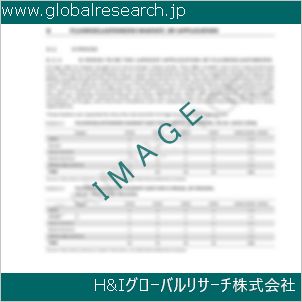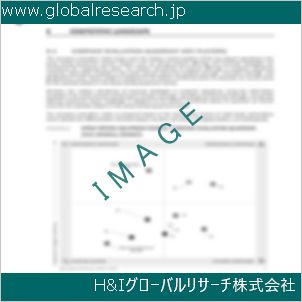Table of Contents
1 Industry Overview of Coal tar
1.1 Definition and Specifications of Coal tar
1.1.1 Definition of Coal tar
1.1.2 Specifications of Coal tar
1.2 Classification of Coal tar
1.3 Applications of Coal tar
1.3.1 Nuclear Application
1.3.2 Non-Nuclear Application
1.4 Industry Chain Structure of Coal tar
1.5 Industry Overview and Major Regions Status of Coal tar
1.5.1 Industry Overview of Coal tar
1.5.2 Global Major Regions Status of Coal tar
1.6 Industry Policy Analysis of Coal tar
1.7 Industry News Analysis of Coal tar
2 Manufacturing Cost Structure Analysis of Coal tar
2.1 Raw Material Suppliers and Price Analysis of Coal tar
2.2 Equipment Suppliers and Price Analysis of Coal tar
2.3 Labor Cost Analysis of Coal tar
2.4 Other Costs Analysis of Coal tar
2.5 Manufacturing Cost Structure Analysis of Coal tar
2.6 Manufacturing Process Analysis of Coal tar
3 Technical Data and Manufacturing Plants Analysis of Coal tar
3.1 Capacity and Commercial Production Date of Global Coal tar Major Manufacturers in 2023
3.2 Manufacturing Plants Distribution of Global Coal tar Major Manufacturers in 2023
3.3 R&D Status and Technology Source of Global Coal tar Major Manufacturers in 2023
3.4 Raw Materials Sources Analysis of Global Coal tar Major Manufacturers in 2023
4 Capacity, Production and Revenue Analysis of Coal tar by Regions, Types and Manufacturers
4.1 Global Capacity, Production and Revenue of Coal tar by Regions 2019-2024
4.2 Global and Major Regions Capacity, Production, Revenue and Growth Rate of Coal tar 2019-2024
4.3 Global Capacity, Production and Revenue of Coal tar by Types 2019-2024
4.4 Global Capacity, Production and Revenue of Coal tar by Manufacturers 2019-2024
5 Price, Cost, Gross and Gross Margin Analysis of Coal tar by Regions, Types and Manufacturers
5.1 Price, Cost, Gross and Gross Margin Analysis of Coal tar by Regions 2019-2024
5.2 Price, Cost, Gross and Gross Margin Analysis of Coal tar by Types 2019-2024
5.3 Price, Cost, Gross and Gross Margin Analysis of Coal tar by Manufacturers 2019-2024
6 Consumption Volume, Consumption Value and Sale Price Analysis of Coal tar by Regions, Types and Applications
6.1 Global Consumption Volume and Consumption Value of Coal tar by Regions 2019-2024
6.2 Global and Major Regions Consumption Volume, Consumption Value and Growth Rate of Coal tar 2019-2024
6.3 Global Consumption Volume and Consumption Value of Coal tar by Types 2019-2024
6.4 Global Consumption Volume and Consumption Value of Coal tar by Applications 2019-2024
6.5 Sale Price of Coal tar by Regions 2019-2024
6.6 Sale Price of Coal tar by Types 2019-2024
6.7 Sale Price of Coal tar by Applications 2019-2024
6.8 Market Share Analysis of Coal tar by Different Sale Price Levels
7 Supply, Import, Export and Consumption Analysis of Coal tar
7.1 Supply, Consumption and Gap of Coal tar 2019-2024
7.2 Global Capacity, Production, Price, Cost, Revenue, Supply, Import, Export and Consumption of Coal tar 2019-2024
7.3 USA Capacity, Production, Price, Cost, Revenue, Supply, Import, Export and Consumption of Coal tar 2019-2024
7.4 EU Capacity, Production, Price, Cost, Revenue, Supply, Import, Export and Consumption of Coal tar 2019-2024
7.5 China Capacity, Production, Price, Cost, Revenue, Supply, Import, Export and Consumption of Coal tar 2019-2024
7.6 Japan Capacity, Production, Price, Cost, Revenue, Supply, Import, Export and Consumption of Coal tar 2019-2024
8 Major Manufacturers Analysis of Coal tar
8.1 Manufacturer One
8.1.1 Company Profile
8.1.2 Product Picture and Specifications
8.1.2.1 Type I
8.1.2.2 Type II
8.1.2.3 Type III
8.1.3 Capacity, Production, Price, Cost, Gross and Revenue
8.1.4 Contact Information
8.2 Manufacturer Two
8.2.1 Company Profile
8.2.2 Product Picture and Specifications
8.2.2.1 Type I
8.2.2.2 Type II
8.2.2.3 Type III
8.2.3 Capacity, Production, Price, Cost, Gross and Revenue
8.2.4 Contact Information
8.3 Manufacturer Three
8.3.1 Company Profile
8.3.2 Product Picture and Specifications
8.3.2.1 Type I
8.3.2.2 Type II
8.3.2.3 Type III
8.3.3 Capacity, Production, Price, Cost, Gross and Revenue
8.3.4 Contact Information
8.4 Manufacturer Four
8.4.1 Company Profile
8.4.2 Product Picture and Specifications
8.4.2.1 Type I
8.4.2.2 Type II
8.4.2.3 Type III
8.4.3 Capacity, Production, Price, Cost, Gross and Revenue
8.4.4 Contact Information
8.5 Manufacturer Five
8.5.1 Company Profile
8.5.2 Product Picture and Specifications
8.5.2.1 Type I
8.5.2.2 Type II
8.5.2.3 Type III
8.5.3 Capacity, Production, Price, Cost, Gross and Revenue
8.5.4 Contact Information
…
9 Marketing Trader or Distributor Analysis of Coal tar
9.1 Marketing Channels Status of Coal tar
9.2 Traders or Distributors with Contact Information of Coal tar by Regions
9.3 Ex-work Price, Channel Price and End Buyer Price Analysis of Coal tar
9.4 Regional Import, Export and Trade Analysis of Coal tar
10 Industry Chain Analysis of Coal tar
10.1 Upstream Major Raw Materials Suppliers Analysis of Coal tar
10.1.1 Major Raw Materials Suppliers with Contact Information Analysis of Coal tar
10.1.2 Major Raw Materials Suppliers with Supply Volume Analysis of Coal tar by Regions
10.2 Upstream Major Equipment Suppliers Analysis of Coal tar
10.2.1 Major Equipment Suppliers with Contact Information Analysis of Coal tar
10.2.2 Major Equipment Suppliers with Product Pictures Analysis of Coal tar by Regions
10.3 Downstream Major Consumers Analysis of Coal tar
10.3.1 Major Consumers with Contact Information Analysis of Coal tar
10.3.2 Major Consumers with Consumption Volume Analysis of Coal tar by Regions
10.4 Supply Chain Relationship Analysis of Coal tar
11 Development Trend of Analysis of Coal tar
11.1 Capacity, Production and Revenue Forecast of Coal tar by Regions and Types
11.1.1 Global Capacity, Production and Revenue of Coal tar by Regions 2024-2029
11.1.2 Global and Major Regions Capacity, Production, Revenue and Growth Rate of Coal tar 2024-2029
11.1.3 Global Capacity, Production and Revenue of Coal tar by Types 2024-2029
11.2 Consumption Volume and Consumption Value Forecast of Coal tar by Regions, Types and Applications
11.2.1 Global Consumption Volume and Consumption Value of Coal tar by Regions 2024-2029
11.2.2 Global and Major Regions Consumption Volume, Consumption Value and Growth Rate of Coal tar 2024-2029
11.2.3 Global Consumption Volume and Consumption Value of Coal tar by Types 2024-2029
11.2.4 Global Consumption Volume and Consumption Value of Coal tar by Applications 2024-2029
11.3 Supply, Import, Export and Consumption Forecast of Coal tar
11.3.1 Supply, Consumption and Gap of Coal tar 2024-2029
11.3.2 Global Capacity, Production, Price, Cost, Revenue, Supply, Import, Export and Consumption of Coal tar 2024-2029
11.3.3 USA Capacity, Production, Price, Cost, Revenue, Supply, Import, Export and Consumption of Coal tar 2024-2029
11.3.4 EU Capacity, Production, Price, Cost, Revenue, Supply, Import, Export and Consumption of Coal tar 2024-2029
11.3.5 China Capacity, Production, Price, Cost, Revenue, Supply, Import, Export and Consumption of Coal tar 2024-2029
11.3.6 Japan Capacity, Production, Price, Cost, Revenue, Supply, Import, Export and Consumption of Coal tar 2024-2029
12 New Project Investment Feasibility Analysis of Coal tar
12.1 New Project SWOT Analysis of Coal tar
12.2 New Project Investment Feasibility Analysis of Coal tar
13 Conclusion of the Global Coal tar (CAS 8007-45-2) Industry 2024 Market Research Report
| ※参考情報 コールタールは、石炭を乾留(熱分解)することによって得られる黒色の粘性液体であり、さまざまな有機化合物を含む複雑な混合物です。その構成成分は、芳香族炭化水素、フェノール、アルコール、酸、エステルなど多岐にわたります。コールタールは、主に石炭から得られるため、その特性や用途は石炭の種類や加工方法によって変わることがあります。 コールタールの特徴としては、まずその粘り気と暗色が挙げられます。常温では粘度が高く、プラスチックのような特性を持っています。また、非常に多様な成分を含んでいるため、化学的な性質も多様で、他の化学物質との反応性が高いことが知られています。さらに、コールタールには芳香族化合物が豊富に含まれており、これらはしばしば重要な化学工業の原料として利用されます。 コールタールにはいくつかの種類があります。ざっくり言えば、温度や条件に応じて異なる区分けが可能です。例えば、低温乾留、一般的な乾留、高温乾留を行うことで、それぞれ異なる特性を持つコールタールが生成されます。また、生成されたコールタールはさらに精製され、特定の用途に応じて分画されることもあります。 コールタールの主な用途には、以下のようなものがあります。まず、道路や歩道の舗装材料としての利用が一般的です。コールタールはその粘性と耐久性から、アスファルトの貴重な成分とされ、効果的な舗装に寄与しています。また、コールタールは防腐剤や防水剤としても使用されることがあり、木材や鉄鋼の保護に役立ちます。 さらに、コールタールは化学工業において重要な原料とされています。特に、アスファルトやピッチといった産業材料の製造にも不可欠であり、多くの石油化学製品の原料として活用されています。たとえば、コールタールからはナフタレン、アントラセン、フルオレンなどが抽出され、これらはさらに化学合成に用いられます。 コールタールに関連する技術として、コールタールの精製プロセスや分離技術が挙げられます。これらの技術では、蒸留や抽出、再結晶化などの手法が用いられ、コールタールから特定の化合物を取り出すことが可能です。また、コールタールを特定の製品に変えるための化学的改変が行われることもあります。たとえば、コールタールの蒸留によって得られるフラクションは、その後、異なる種類の合成樹脂や化学薬品の製造に使用されます。 最近では、環境や健康に対する影響も考慮され、コールタールの取り扱いや利用に関する規制が厳しくなっています。特に、コールタールに含まれるいくつかの成分は発がん性があることが知られており、適切な防護措置を講じることが重要です。企業や研究機関では、コールタールの安全な利用に向けた研究も進められています。 最後に、コールタールはその多様な性質と利用分野から、今後も異なる産業において重要な役割を果たす可能性があります。特に、持続可能な材料としての利用や新たな製品開発に向けた研究が進む中で、その価値はますます高まることでしょう。これにより、コールタールは新たな市場や技術の発展に寄与する重要な素材となることが期待されます。 |
❖ 免責事項 ❖
http://www.globalresearch.jp/disclaimer












